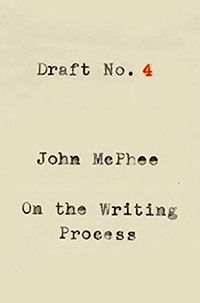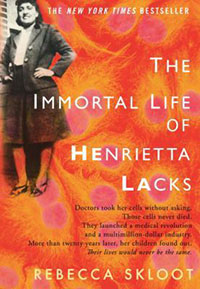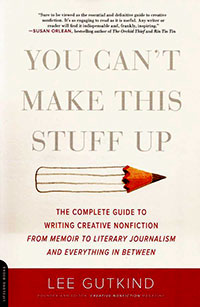There’s an old Elton John song titled, Sorry Seems to be the Hardest Word. Well, I wonder if he’d mind if I changed the title to, Structure Seems to be the Hardest Word.
Structure is a lot like voice; it needs to be present, yet it must be invisible and unforced. Without it, the writing may fall down just like a kindergartner’s block tower. My current nonfiction project has great material with plenty of primary and secondary sources for me to search, but that’s not enough. It needs a solid structure to support it, or it will tip over.
There are a few basic questions I am asking myself to uncover a structure:
- What is the story I want to tell?
- How does this story move along chronologically?
- What are the themes in the story?
- Why does this story matter?
 With Bold Women of Medicine: 21 Stories of Astounding Discoveries, Daring Surgeries, and Healing Breakthroughs, Chicago Review Press, 2017, the structure and theme were inherently in place. Themes of perseverance and education as well as having a good mentor aided the medical women in their successful careers. The narrative made sense to me, probably because I was writing individual chronological stories about lives well-lived.
With Bold Women of Medicine: 21 Stories of Astounding Discoveries, Daring Surgeries, and Healing Breakthroughs, Chicago Review Press, 2017, the structure and theme were inherently in place. Themes of perseverance and education as well as having a good mentor aided the medical women in their successful careers. The narrative made sense to me, probably because I was writing individual chronological stories about lives well-lived.
 Recently I dove into Draft No. 4: On the Writing Process by John McPhee. He says, “The approach to structure in factual writing is like returning from a grocery store with materials you intend to cook for dinner. You set them out on the kitchen counter, and what’s there is what you deal with, and all you deal with.”[1] One structure he writes about is the ABC/D structure, where he pits the stories of three similar people against someone dissimilar. And that fourth element the “D” appears throughout the whole story. By profiling people in this way, he adds a new dimension or conflict to the piece. And according to McPhee, theme plays a larger role. Hmmm, okay so there’s one way to go.
Recently I dove into Draft No. 4: On the Writing Process by John McPhee. He says, “The approach to structure in factual writing is like returning from a grocery store with materials you intend to cook for dinner. You set them out on the kitchen counter, and what’s there is what you deal with, and all you deal with.”[1] One structure he writes about is the ABC/D structure, where he pits the stories of three similar people against someone dissimilar. And that fourth element the “D” appears throughout the whole story. By profiling people in this way, he adds a new dimension or conflict to the piece. And according to McPhee, theme plays a larger role. Hmmm, okay so there’s one way to go.
 One of my favorite works of adult nonfiction is The Immortal Life of Henrietta Lacks by Rebecca Skloot. If you’re not familiar with it, pick it up and read it soon. In this book Skloot tells the story of Henrietta Lacks, a poor African American woman stricken with cervical cancer. As Lacks was being treated in 1951, her cells were taken without her consent. Ultimately, HeLa cells, as they have become known, have transformed medicine as we know it today.
One of my favorite works of adult nonfiction is The Immortal Life of Henrietta Lacks by Rebecca Skloot. If you’re not familiar with it, pick it up and read it soon. In this book Skloot tells the story of Henrietta Lacks, a poor African American woman stricken with cervical cancer. As Lacks was being treated in 1951, her cells were taken without her consent. Ultimately, HeLa cells, as they have become known, have transformed medicine as we know it today.
In structuring her book, Skloot uses a braided story structure — a different approach from McPhee’s. During her research, she discovered countless moving parts to Henrietta’s story, and the question was how best to unify them into a single narrative. What she figured out was to take all the important narratives and weave them through like a braid, jumping back and forth in time. Similar to the structure of the novel Fried Green Tomatoes at the Whistle Stop Café by Fannie Flagg. And because Skloot’s research was embedded in the story, she included her story with Deborah, (Henrietta’s daughter) as one of the strands. That central narrative carries through the whole book.
Skloot used three different colored index cards, one for each of the three central narratives. She arranged them on a large table and moved them around in time. She introduced all three strands in the beginning, so the readers knew what to expect. What she figured out was that she was spending too much time on each narrative and not jumping around in time fast enough, thus bogging down the story. As soon as she moved more quickly from narrative to narrative, the book began to take shape.
My nonfiction story takes place within several months, so I don’t have the luxury of jumping back and forth between decades as Skloot was able to do. But, there are multiple characters: steamboat captains, Native Americans, explorers, naturalists and botanists, and of course settlers and farmers all telling their own stories. So perhaps I can braid these narratives together.
Since only a few interacted during the historical event and cannot be pitted against each other directly, I need a way to connect them. So back I go to John McPhee’s ABC/D structure, and it dawns on me that all of my characters confront the Mississippi River. Perhaps I should pit the story around the river. A central narrative to carry the reader through the book. A eureka moment? I hope.
 Finally, in rereading You Can’t Make This Stuff Up: The Complete Guide to Writing Creative Nonfiction From Memoir to Literary Journalism and Everything in Between by Lee Gutkind, I found an additional way to look at structure.
Finally, in rereading You Can’t Make This Stuff Up: The Complete Guide to Writing Creative Nonfiction From Memoir to Literary Journalism and Everything in Between by Lee Gutkind, I found an additional way to look at structure.
Gutkind writes about the Creative Nonfiction Dance where you create a rhythm for the story:
“So here’s the dance that is diagrammed. The scene gets the reader interested, (okay I have many good scenes) and involved, so you can then provide information, nonfiction, to the reader. (I have good information as well.) But sooner or later, a reader will get distracted or overloaded with information, and you will lose him. But before you allow that to happen you go back to the scene — or introduce a new scene — and reengage.”[2]
It’s even better, he says, if you can embed information in the scene then you can travel from scene to scene without stopping.
I may need a combination of these structure ideas, or maybe a different structure altogether, we shall see. Am I overthinking it? Probably, but structure, for sure, seems to be the hardest word.
I wonder if Elton has any words of wisdom for me.
________________________________
[1] McPhee, John. Draft No. 4 On the Writing Process. New York: Farrar, Strauss and Giroux, 2017, p. 20.
[2] Gutkind, Lee. You Can’t Make This Stuff Up: The Complete Guide to Writing Creative Nonfiction From Memoir to Literary Journalism and Everything in Between. Boston: DiCapo Press, 2013, p. 139.
